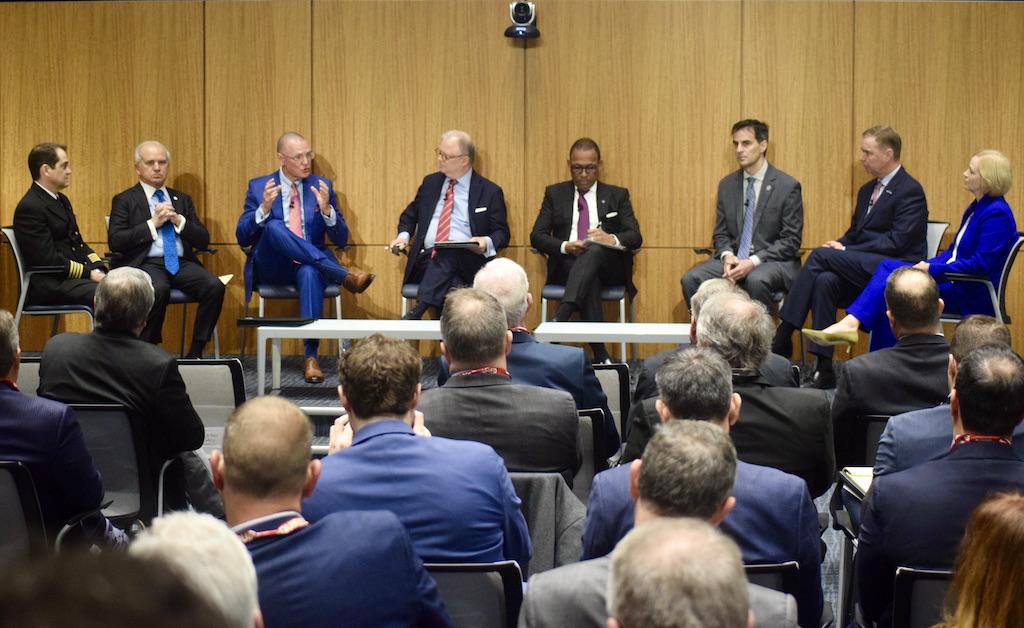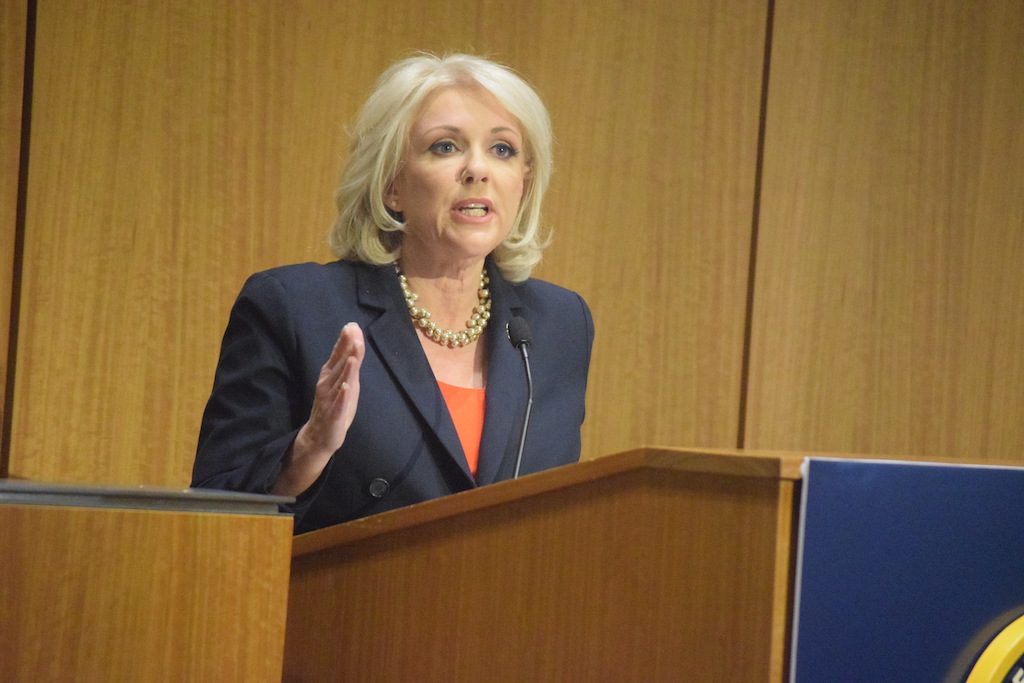
The heads of major aviation trade organizations participated in a panel at the Safety Summit.
MCLEAN, Virginia – The safety management system (SMS) paradigm that will likely be mandated for certain business aviation operators was roundly endorsed by industry leaders summoned to the FAA’s all-hands-on-deck Safety Summit March 15.
“SMS really goes to the heart of identifying and mitigating risk in the system,” said Faye Malarkey Black, president and CEO of the Regional Airline Association (RAA). “Regional airlines leaned in early and eagerly on that and boy, I have to tell you that it has paid off in spades. There is no single program that has done more to advance our safety today than SMS.”
Scheduled airlines have been required since 2018 to implement SMS programs—systemic, data-driven approaches to proactively identify potential hazards and mitigate risks in the operating environment. In January, the FAA published a notice of proposed rulemaking (NPRM) to expand the requirement for SMS implementation beyond airlines to include Parts 135 charter operators, Part 91.147 air tour operators and aircraft manufacturers. The public comment period for the proposed regulation closes on April 11.
Acting FAA Administrator Billy Nolen assembled the summit, held at the suburban Washington offices of MITRE Corp., a federally funded research and development organization, following several recent runway incursions at major airports. The incidents included a near-miss Feb. 27 between a Learjet 60 on takeoff roll from Boston Logan International Airport and an incoming JetBlue Embraer 190.
“These events are concerning,” said Nolen, who followed U.S. Transportation Secretary Pete Buttigieg in making opening remarks. “They’re not what we have come to expect during a time of unprecedented safety in the U.S. air transportation system. The question is: what do they mean?”
Following Nolen to the podium, NTSB Chair Jennifer Homendy said the safety board is investigating six runway incursions since January and two recent wrong runway landings. “I often hear that in 10 of the last 12 years there have been no airline passenger fatalities,” she said. “That’s true, but the absence of a fatality or an accident doesn’t mean the presence of safety. There’s always more we can do to improve safety.”
During a panel discussion that Nolen co-moderated with former NTSB Chairman Robert Sumwalt, association executives raised the issue of chronic FAA underfunding. Nolen, referencing the runway incursions the NTSB is investigating, remarked that “none of those [incidents] are really related to immediate funding. You’ve got two trained pilots on the flight deck. You’ve got two airplanes that take off without a clearance. You have people that verify [which] runway I’m turning on. Is that basic blocking and tackling? Is that a fundamental?”
On Feb. 16, the FAA issued a final regulation requiring airports that are classified as small, medium or large hubs to implement SMS programs in the next four to five years. A number of major airports have already adopted voluntary programs, said American Association of Airport Executives (AAAE) President and CEO Todd Hauptli, who mentioned airports in Atlanta, Minneapolis, Sacramento, San Francisco and Seattle. “Now, we’re going to scale it across the system,” he said. “I think it's very beneficial that we’re going to have this expansion across many of the airports in the system.”
Concern Over Scalability

Scalability is the dynamic that most concerns business aviation. The FAA’s proposed regulation for Part 135 charter and Part 91 air tour companies affects an estimated 2,600 operators of all sizes. Companies ranging from multi-aircraft fleet operators to single-pilot, single-aircraft enterprises would have two years after a final rule is published to introduce their SMS programs.
NBAA, one of the aviation trade associations positioned on the dais at the FAA Safety Summit, views the SMS proposed rule as the biggest regulatory issue general aviation has faced in more than a decade. NBAA as well as the National Air Transportation Association, which represents Part 135 operators, successfully lobbied the FAA to extend the comment deadline for the draft regulation, which originally was scheduled for March 13.
“I want to underscore that SMS is a great safety tool, and it’s one that has been embraced by our industry for a long time,” NBAA President and CEO Ed Bolen told the summit. “There is an international standard for business aviation operations that we are enthusiastic about,” he said, referencing the safety-centric International Standard for Business Aircraft Operations voluntary standard.
“SMS is a great safety tool, but as in every case, the tool needs to be sized to recognize the challenge,” Bolen elaborated. “A saw is a great cutting tool; a scalpel is a great cutting tool. They’re not interchangeable. As we look through what we’re trying to accomplish, getting the rule right, allowing it to scale for a diversity of operations, is really important.”
The NTSB recommended that Part 121 airlines be required to establish SMS programs in 2007 following its investigation of the Oct. 14, 2004 crash of a Pinnacle Airlines’ Bombardier CRJ200 during a repositioning flight, killing two pilots. The safety board recommended in 2009 that all Part 91 operators adopt SMS after a Cessna 310R piston twin operated by the National Association for Stock Car Auto Racing crashed into a neighborhood in Sanford, Florida, on July 10, 2007. The two pilots on the airplane and three people on the ground were killed.
In November 2016, the NTSB recommended that Part 135 operators adopt SMS as a result of its investigation into the Nov. 10, 2015 crash in Akron, Ohio, of a Hawker 700A twin-engine business jet being operated as an on-demand charter flight, killing nine people. The board says six of its SMS safety recommendations to the FAA remain open.
Speaking with Business & Commercial Aviation following the public portion of the Safety Summit, Homendy said the FAA’s current draft SMS regulation for Parts 91 and 135 operators doesn’t go as far as the NTSB would like. The board is also concerned that the proposed requirement for manufacturers does not address maintenance and repair functions.
“Certainly, it will help improve safety, and we do support scalability—we have a recommendation on that,” Homendy said. “On Part 91, it [covers] only air tours,” she added. “For the other parts of adventure flights where we’ve made recommendations—we had a report on Part 91 revenue-generating operations, everything from parachute jump flights and hot air balloon operations—[the rule] won’t apply to any of those. The air tours is a good start, but we want to see the rule broadened. It is a great first step because it is something we’ve been focused on for a long time, but we’d like to see some additions.”



